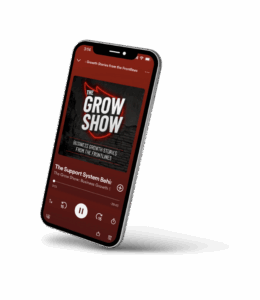Top Lead Generation Metrics Every Marketer Should Track

Why Tracking Lead Generation Metrics Is Non-Negotiable
Marketing without measurement is guesswork. In an era where data drives decisions, ignoring lead generation KPIs means flying blind. These metrics provide actionable insights into how campaigns perform at every stage of the funnel, from attracting prospects to converting them into qualified leads.
Tracking metrics helps you:
- Optimize budget allocation: Identify which channels and campaigns deliver the best ROI.
- Improve lead quality: Focus on leads most likely to convert.
- Enhance targeting: Refine messaging and segmentation using engagement data.
- Accelerate sales cycles: Pinpoint friction points and nurture leads effectively.
- Demonstrate marketing’s impact: Show measurable contributions to growth and revenue.
Without a measurement framework, marketers risk wasting money on ineffective tactics and missing opportunities to scale what works.
According to Gartner, companies that leverage data-driven marketing see a 20% increase in ROI compared to those that don’t. Tracking metrics ensures marketing teams can continuously improve and adapt to new technologies and consumer behavior shifts.
Types of Lead Generation Metrics
In lead generation, metrics can be categorized into two main types: direct and indirect. Each category offers unique insights that can shape your approach to generating new business opportunities.
Direct KPIs for Lead Generation
Direct KPIs provide clear and concrete data related to lead generation activities. Some of the most critical direct KPIs include:
Lead Conversion Rate: This metric indicates the effectiveness of your sales funnel. A higher conversion rate suggests that your strategies are working efficiently.
Cost per Lead (CPL): Understanding the cost associated with each lead allows you to budget effectively and determine the ROI of your lead generation efforts.
Lead Volume: This measures the total number of leads generated over a specific period, offering insight into the overall effectiveness of your outreach efforts.
Tracking these direct metrics helps you pinpoint successful strategies and highlights improvement areas. For instance, if your lead conversion rate is lower than expected, it may indicate that your messaging is not resonating with your target audience or that your sales team requires additional training.
Related Content: Should I Prioritize Lead Quantity or Quality?
Indirect Metrics for Lead Generation
Indirect metrics are more nuanced and often reflect broader trends within your lead generation strategy. Examples include:
Brand Awareness: Measuring your audience's familiarity with your brand can indirectly impact lead generation by influencing perceptions and trust.
Engagement Rates: KPIs such as click-through rates or social media interactions can indicate the effectiveness of your content and how well it is resonating with your audience.
Customer Lifetime Value (CLV): This represents the total revenue a business can expect from a customer throughout their relationship, often influenced by initial lead quality.
By monitoring these indirect KPIs, businesses can anticipate future performance and adjust their strategies. For example, increasing brand awareness can lead to more leads as potential customers become more familiar with your offerings.
Direct KPIs | Indirect Metrics |
Lead Conversion Rate How effectively visitors turn into leads. Calculated by dividing total leads by total visitors, then multiplying by 100. | Brand Awareness How recognizable and familiar your brand is to your target audience. Typically measured through surveys, impressions, or reach. |
Cost per Lead Average amount spent to acquire a lead. Calculated by dividing total campaign cost by the number of leads generated. | Engagement Rates How much people interact with your marketing content (likes, clicks, shares, comments). Calculated as engagements ÷ impressions (or reach). |
Lead Volume The total number of leads generated in a set time period. Simply counted as the raw number of leads. | Customer Lifetime Value (CLV) Total revenue a business can expect from a single customer over their entire relationship. Calculated as (average purchase value × purchase frequency × customer lifespan). |
The 15 Most Important Lead Generation Metrics
These foundational metrics quantify lead volume and cost. They serve as the baseline for understanding campaign performance and creating benchmarks for future growth.
1. Number of Leads Generated
This simple metric tracks the total number of leads captured within a given timeframe. While lead volume alone doesn’t guarantee success, it’s a critical starting point.
For example, if webinar attendance rates dip, that’s a sign your promotional strategy or messaging may need refinement. Tracking demographics alongside total numbers can also reveal audience shifts that influence conversion potential.
2. Cost Per Lead (CPL)
CPL measures the average spend required to acquire a single lead:
CPL Formula:
Total Marketing Spend ÷ Total Leads Generated
According to HubSpot, the average CPL varies widely:
- B2B tech companies: $30–$150 per lead
- Consumer-focused campaigns: Under $20 per lead
(Source)
CPL shouldn’t be viewed in isolation. A $15 lead that never converts costs more long-term than a $50 lead that closes quickly. Always evaluate CPL alongside conversion rates and customer lifetime value (CLV).
3. Lead Source and Channel Performance
Not all leads — or channels — are created equal. Tracking which channels generate the most leads allows you to allocate resources where they’ll drive the highest ROI.
A HubSpot study found that inbound leads (SEO, content marketing) cost 61% less than outbound leads like cold calls and direct mail (Source). This insight can guide channel prioritization and investment.
4. Lead Qualification Rate
Tracks the percentage of leads that meet pre-set qualification criteria such as budget, authority, need, and timeline (BANT).
A high qualification rate indicates that your targeting and messaging resonate with the right audience. A low rate signals the need to adjust strategy.
5. Number of MQLs vs. SQLs
Distinguishing between Marketing Qualified Leads (MQLs) and Sales Qualified Leads (SQLs) is crucial for sales and marketing alignment.
- MQLs: Leads likely to become customers based on engagement.
- SQLs: Leads vetted by sales and ready for direct outreach.
Tracking the conversion rate from MQL to SQL highlights the effectiveness of your nurturing and handoff processes. Misalignment often leads to wasted resources and lower close rates.
6. Lead Scoring Metrics
Assign scores to leads based on actions like website visits, content downloads, or demo requests.
For example, a prospect who downloads multiple resources and signs up for a webinar signals higher intent than someone who only visits your homepage. Lead scoring helps prioritize follow-up efforts and streamline the sales process.
7. Email Open and Click-Through Rates
Email remains a top nurturing channel.
- Average B2B Open Rates: 20–25%
- Average CTRs: 2–5% (Campaign Monitor)
Low open rates may indicate weak subject lines or poor segmentation. Low CTRs suggest content or CTAs need improvement.
8. Landing Page Conversion Rate
This measures the percentage of visitors completing a desired action, like filling out a lead form.
- Average conversion rate: 2.35% across industries
- Top performers: Exceed 5% (WordStream)
Improving page speed, clarity, and trust elements like testimonials can dramatically boost this KPI.
9. Content Engagement Metrics
Metrics like time on page, downloads, and video completions indicate content relevance and value.
For example, prospects who watch a full demo video are closer to buying than those who bounce after a few seconds. These insights help refine nurturing strategies and messaging.
10. Lead-to-Customer Conversion Rate
Tracks the percentage of leads that become paying customers.
- B2B average: 5–10% conversion rate (MarketingSherpa)
Improving this rate boosts revenue without requiring additional lead volume.
11. Customer Acquisition Cost (CAC)
CAC measures total marketing and sales spend to acquire one customer.
To ensure profitability, CAC must remain below customer lifetime value (CLV). For example, if CLV is $1,000, a CAC of $300 or less is ideal.
12. Time to Conversion (Sales Cycle Length)
Tracks how long it takes for a lead to convert into a customer. Shorter cycles mean lower costs and faster growth. Identifying and removing bottlenecks is key to improving this metric.
13. Lead Velocity Rate (LVR)
Measures the month-over-month growth rate of qualified leads.
High-growth companies target 15%+ LVR to sustain momentum.
14. Multi-Touch Attribution
Helps determine which marketing touchpoints have the most influence throughout the buyer journey. This enables smarter budget allocation across channels.
15. Lead Engagement Over Time
Tracks how interest fluctuates as leads move through the funnel. Automation platforms can trigger re-engagement campaigns when engagement declines.
Find Your Perfect Solution – Download Our Lead Generation Services Comparison Guide Now!
How to Track Lead Generation Metrics
Collecting and analyzing lead generation metrics requires the right tools and practices. Here’s how you can effectively track these critical data points.
Tools for Tracking Lead Generation
Numerous tools are available to help businesses monitor their lead generation metrics effectively. Some popular options include:
- Customer Relationship Management (CRM) Software: Platforms like HubSpot or Salesforce allow businesses to track leads and their conversion metrics in real-time.
- Analytics Tools: Google Analytics provides in-depth insight into lead generation campaigns by monitoring traffic sources, conversions, and user behavior.
- Email Marketing Software: Platforms like Mailchimp or Constant Contact help track leads generated from email campaigns, including open rates and click-through rates.
Selecting the right tools will enable you to gather precise metrics and analyze your lead generation strategies effectively. Additionally, integrating these tools can enhance your data analysis capabilities.
For instance, linking your CRM with your email marketing software can provide a holistic view of how leads interact with your content across different channels. This integration allows for a seamless flow of information, enabling you to tailor your marketing efforts based on comprehensive insights.
Frequency of Tracking for Optimal Results
How often you track your lead generation metrics can significantly affect your decisions. Implementing a consistent tracking schedule is essential for accurate insights:
- Daily tracking can help monitor real-time engagement rates, especially during a new campaign launch.
- Weekly assessments allow you to identify short-term trends and adjust campaigns quickly.
- Monthly tracking helps conduct in-depth analysis, evaluate overall performance, and generate comprehensive reports.
Ultimately, the frequency will depend on your specific business goals, resources, and the pace of your sales cycle. It’s also important to consider the seasonal nature of your industry; for example, retail businesses may need to ramp up their tracking during peak shopping seasons to capture the influx of leads.
Establishing KPIs tailored to your objectives can guide your tracking frequency. This way, you can ensure that you are collecting data and deriving actionable insights that can drive your lead generation efforts forward.
Measurement of Success
Another critical difference lies in how success is measured in each area. Lead generation success is typically quantified by metrics such as the number of leads generated, conversion rates from leads to opportunities, and overall traffic to marketing assets. In contrast, appointment setting success is measured by the number of appointments secured, the quality of those appointments, and, ultimately, the conversion rate from appointments to closed deals. This difference in measurement highlights each function’s unique contributions to the overall sales strategy, emphasizing the need for alignment between marketing and sales teams to ensure that lead generation and appointment setting efforts effectively support one another.
Interpreting Lead Generation Metrics
Collecting data is insufficient; businesses must understand how to interpret their lead generation metrics. This involves analyzing the data correctly and making informed strategic decisions based on insights from those metrics. The ability to interpret these KPIs can be the difference between a successful campaign and a wasted budget, making it essential for marketers to understand what the numbers mean.
Analyzing Your Lead Generation Data
To extract meaningful insights from your lead generation data, consider the following approaches:
Benchmarking: To gauge performance, compare your KPIs against industry standards or historical data. This can help you identify areas where you excel or where there's room for improvement.
Segmenting Your Data: For a more detailed analysis, break your data into segments based on factors like source or customer demographics. This allows for targeted strategies that resonate with specific audience segments.
Visualizing Data: Use graphs and charts to visualize trends over time, making it easier to identify patterns and anomalies. Visualization tools can transform complex data sets into digestible insights that can be shared across teams.
By applying these methods, businesses can gain a clearer perspective on their metrics and make more informed decisions. Regularly revisiting your analysis can help you stay aligned with changing market dynamics and customer preferences, ensuring that your lead generation strategies remain practical and relevant.
Read More: Using Data to Advance Your Lead Generation
Making Data-Driven Decisions
Data-driven decision-making leverages insights from lead generation KPIs to shape your strategies. Here are some ways to implement it:
Testing and Optimization: Use data insights to test different campaign approaches and optimize based on their performance. A/B testing can be particularly effective in determining which messages resonate best with your audience.
Resource Allocation: Based on lead generation performance, allocate resources to the strategies that yield the highest returns. This ensures that your budget is spent efficiently, maximizing your return on investment.
Adapting to Trends: Stay agile and ready to pivot strategies based on emerging trends indicated by your data. The digital landscape is constantly evolving, and being able to adapt quickly can give you a competitive edge.
Using lead generation KPIs for strategic decision-making, businesses can stay ahead of the competition and maximize their growth potential. Fostering a culture of data literacy within your organization can empower all team members to contribute to data-driven initiatives, enhancing overall performance and innovation. Regular training sessions and workshops keep everyone updated on the latest tools and techniques for analyzing and interpreting data effectively.
Improving Your Lead Generation Metrics
If your lead generation metrics are underperforming, various strategies can help boost them. Investing time in improvement can lead to significant revenue and brand reputation gains.
Strategies for Boosting Your KPIs
To enhance lead generation performance, consider implementing the following strategies:
Improve Content Quality: Offer valuable content that appeals to your target audience's needs and interests. This encourages engagement.
Optimize Your Landing Pages: Ensure your pages are user-friendly and designed to convert visitors into leads.
Enhance SEO Practices: Strong SEO practices can increase organic traffic to your website, ultimately boosting lead generation.
By actively working on these aspects, businesses can see measurable improvements in lead generation KPIs. Additionally, incorporating multimedia elements such as videos, infographics, and podcasts can significantly enrich your content, making it more engaging and shareable. This captures the attention of potential leads and positions your brand as a thought leader in your industry, fostering trust and credibility among your audience.
Avoiding Common Pitfalls in Lead Generation
Lastly, avoiding common mistakes is crucial for maintaining healthy lead generation metrics. Some pitfalls to watch out for include:
Here are some ways to implement it:
Neglecting Follow-Ups: Failing to follow up with leads promptly can result in lost opportunities. Always have a follow-up strategy in place.
Lack of Targeting: Not focusing on your target audience can result in poor-quality leads. Ensure your marketing efforts are properly directed.
Inconsistent Tracking: Infrequent or inconsistent tracking of KPIs can lead to missed insights. Adhere to a regular tracking schedule.
Leveraging automation tools can streamline your follow-up processes, ensuring no lead slips through the cracks. These tools can send personalized emails, schedule calls, and even provide reminders for timely follow-ups, allowing your team to focus on nurturing relationships rather than getting bogged down by administrative tasks. This increases efficiency and enhances the overall experience for potential leads, making them more likely to convert.
Wrapping Up
Lead generation isn’t just about volume — the real power lies in measuring its impact. By focusing on key metrics like cost per lead, conversion rates, velocity, and attribution, marketers gain clarity into what’s working and where efforts fall short. Use these insights to fine-tune your campaigns, allocate resources wisely, and improve lead quality over time. When the right data guides your strategy, growth becomes not a guess, but a repeatable, scalable process.


